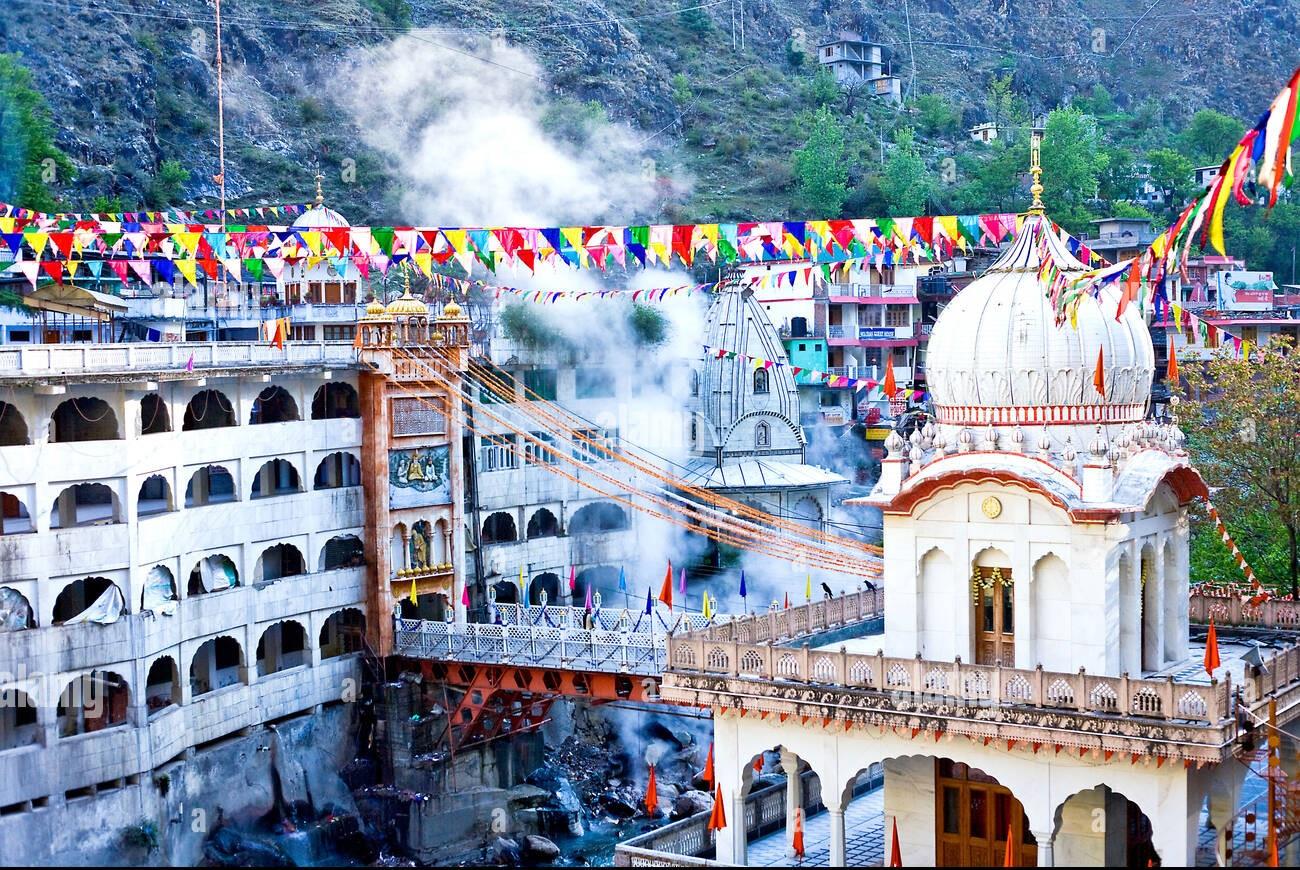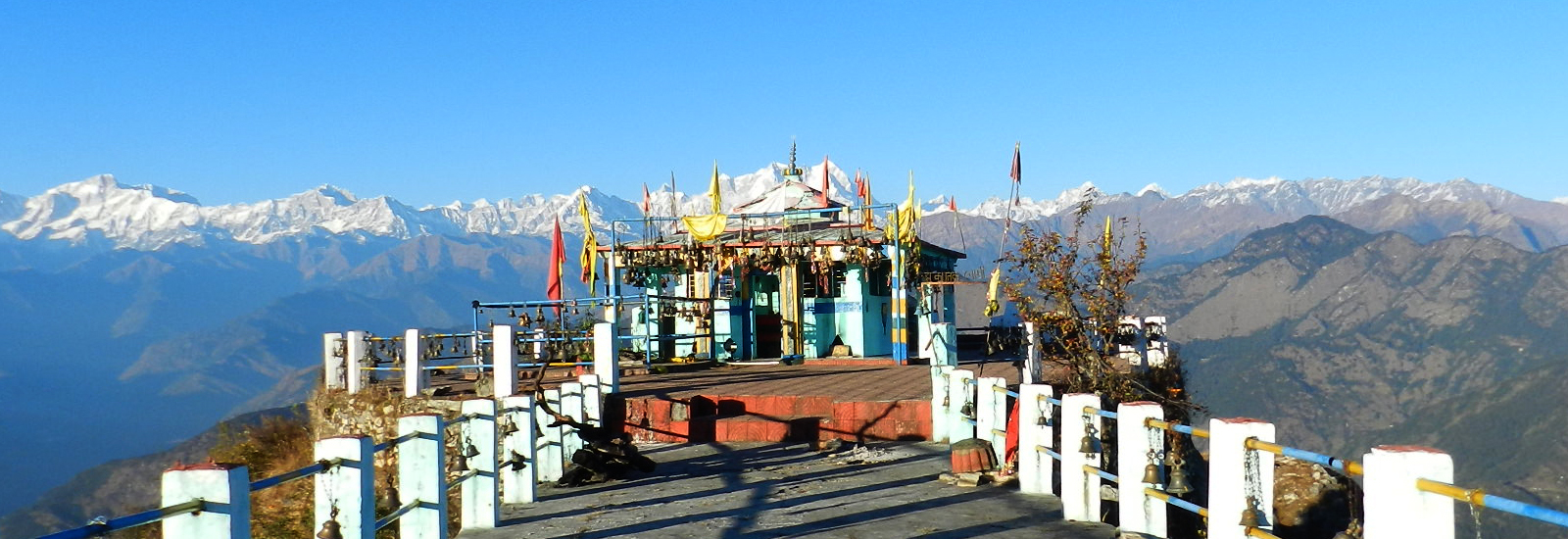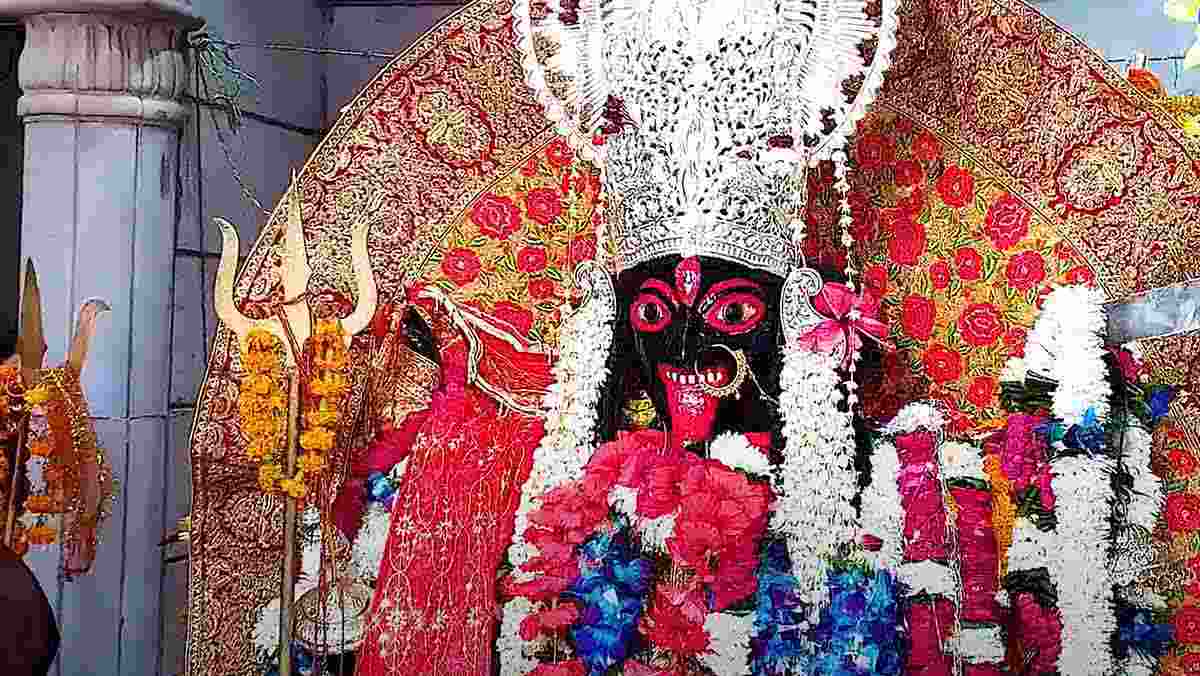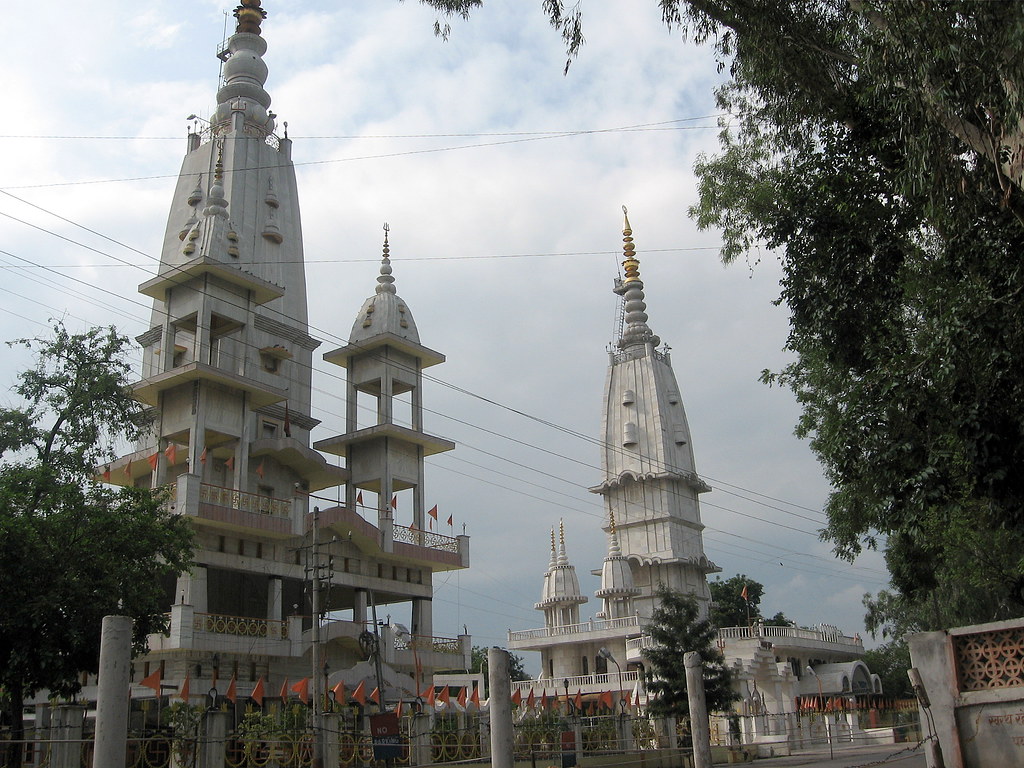
Tungnath Temple: A Sacred Shrine in the Himalayas
Description:
Tungnath Temple, perched at an elevation of 3,680 meters (12,073 feet) in the Indian Himalayas, is one of the highest Shiva temples in the world. Located in the Rudraprayag district of Uttarakhand, India, it is part of the Panch Kedar—five temples dedicated to Lord Shiva. The temple’s serene setting amidst snow-capped peaks and lush green meadows makes it a significant pilgrimage site and a captivating destination for trekkers.
Constructed in the 9th century, the temple is renowned for its ancient architecture and spiritual significance. It is believed to have been built by the Pandavas from the Mahabharata epic. The trek to Tungnath is both challenging and rewarding, offering stunning panoramic views of the surrounding Himalayan ranges, including Nanda Devi and Chaukhamba.
Visitors are drawn not only by the temple’s spiritual allure but also by the natural beauty of the region, making Tungnath a unique blend of religious devotion and breathtaking landscapes.
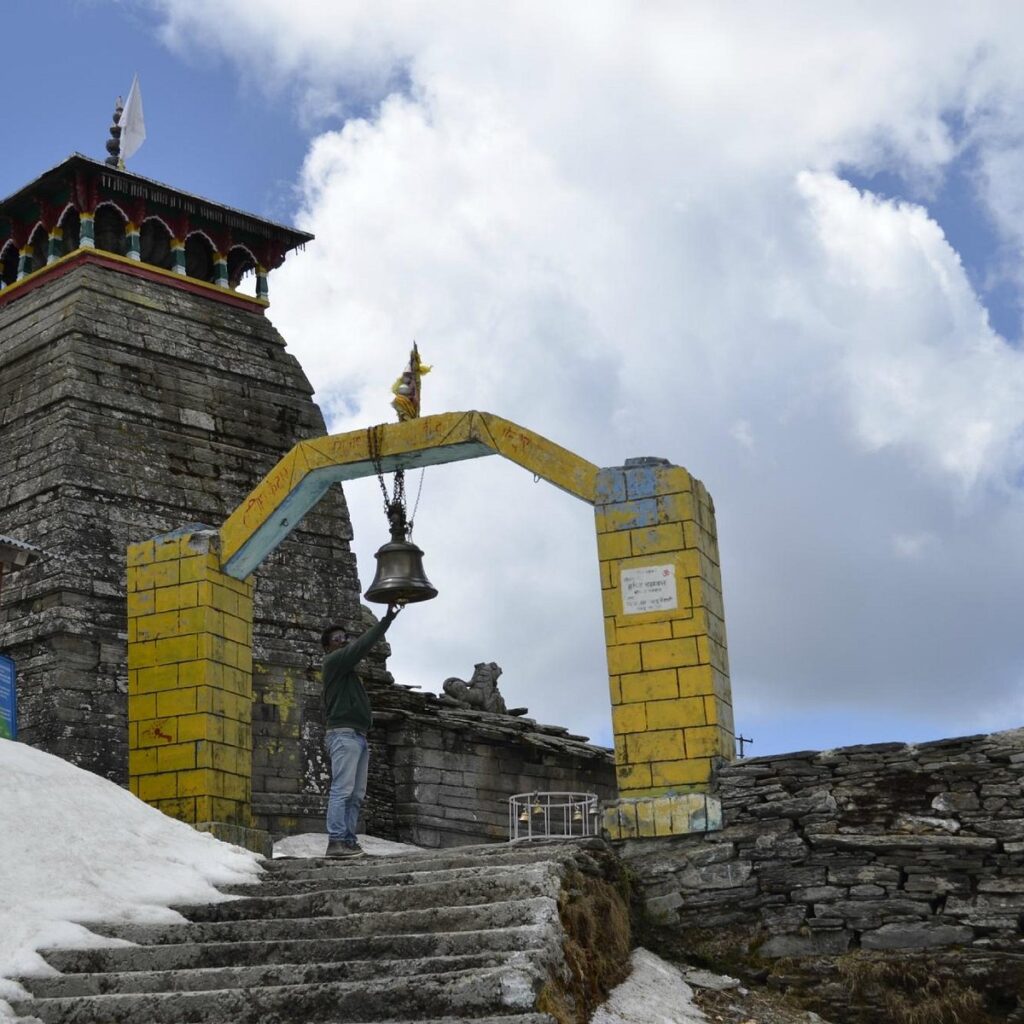
Tungnath Temple is located in the Rudraprayag district of Uttarakhand, India. It sits at an elevation of approximately 3,680 meters (12,073 feet) above sea level in the Himalayan mountain range. The temple is part of the Panch Kedar, a group of five temples dedicated to Lord Shiva, and is situated near the village of Chopta, which is the starting point for the trek to Tungnath. The area is renowned for its stunning natural beauty, including views of snow-capped peaks and lush green meadows.
Key aspects of Tungnath Temple include:
- Historical Significance: The temple is believed to have been established by the Pandavas, the heroes of the Mahabharata, who built it to atone for their sins. It is said to mark the location where the arm of the bull, symbolizing Shiva, was worshiped.
- Architectural Features: Tungnath Temple is known for its ancient and traditional architectural style. The temple’s structure is relatively simple but holds a deep spiritual significance. The deity inside the temple is represented by a ‘lingam,’ which is a common symbol of Shiva.
- Trekking Destination: Reaching Tungnath involves a trek of about 3.5 kilometers (2.2 miles) from the base camp at Chopta. The trek is considered moderate and offers stunning views of the Himalayan landscape, making it a popular destination for trekkers and nature enthusiasts.
- Religious Importance: The temple is visited by thousands of pilgrims, especially during the Hindu festivals of Maha shivaratri and Shravan. It is also part of the Char Dham pilgrimage circuit in Uttarakhand.
The combination of its religious significance and breathtaking natural surroundings makes Tungnath Temple a unique and sacred destination in the Himalayas.
Weather of Tungnath Temple:
Summer (May to June)
Conditions: This is the best time to visit Tungnath as the weather is generally pleasant and clear. The snow has melted from the trekking paths, making the trek more accessible.
Temperature: Daytime temperatures range from 10°C to 15°C (50°F to 59°F), while nighttime temperatures can drop to around 5°C (41°F).

Monsoon (July to September)
- Temperature: Daytime temperatures range from 10°C to 15°C (50°F to 59°F), and nighttime temperatures can drop to around 5°C (41°F).
- Conditions: Heavy rainfall is common during these months, which can make the trekking trails slippery and prone to landslides. The increased moisture also brings lush greenery but also poses a risk for trekkers.

Autumn (October to November)
- Temperature: Daytime temperatures are cool, ranging from 5°C to 10°C (41°F to 50°F), while nighttime temperatures can drop below freezing.
- Conditions: This is another good time to visit Tungnath as the weather is clear, and the views of the surrounding mountains are spectacular. The cold can be quite intense, so warm clothing is necessary.
Winter (December to February)
- Temperature: Daytime temperatures can be very cold, ranging from -5°C to 5°C (23°F to 41°F), and nighttime temperatures often drop well below freezing.
- Conditions: Snowfall is common during winter, which can block the trekking paths and make travel to Tungnath difficult . The temple remains closed for worship during heavy snowfall periods.
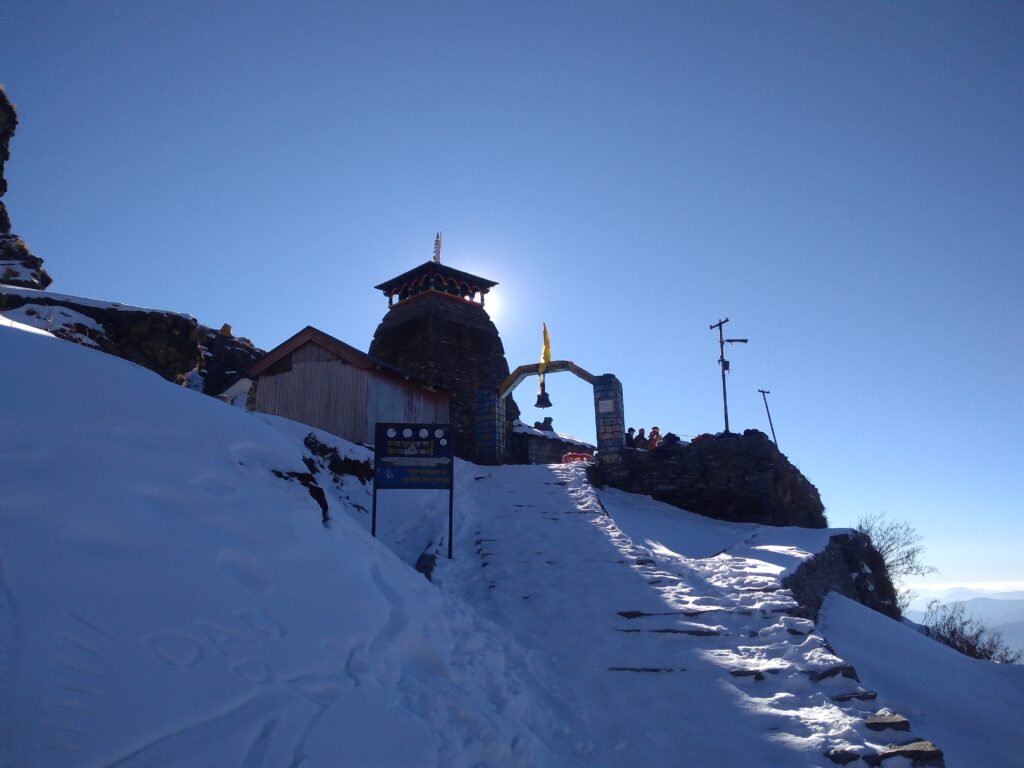
Spring (March to April)
- Temperature: Daytime temperatures range from 5°C to 10°C (41°F to 50°F), and nighttime temperatures can drop to around 0°C (32°F).
- Conditions: The snow begins to melt, and the landscape starts to bloom with fresh greenery. This is a transitional period, and the weather can be quite variable, with occasional snowfall still possible.
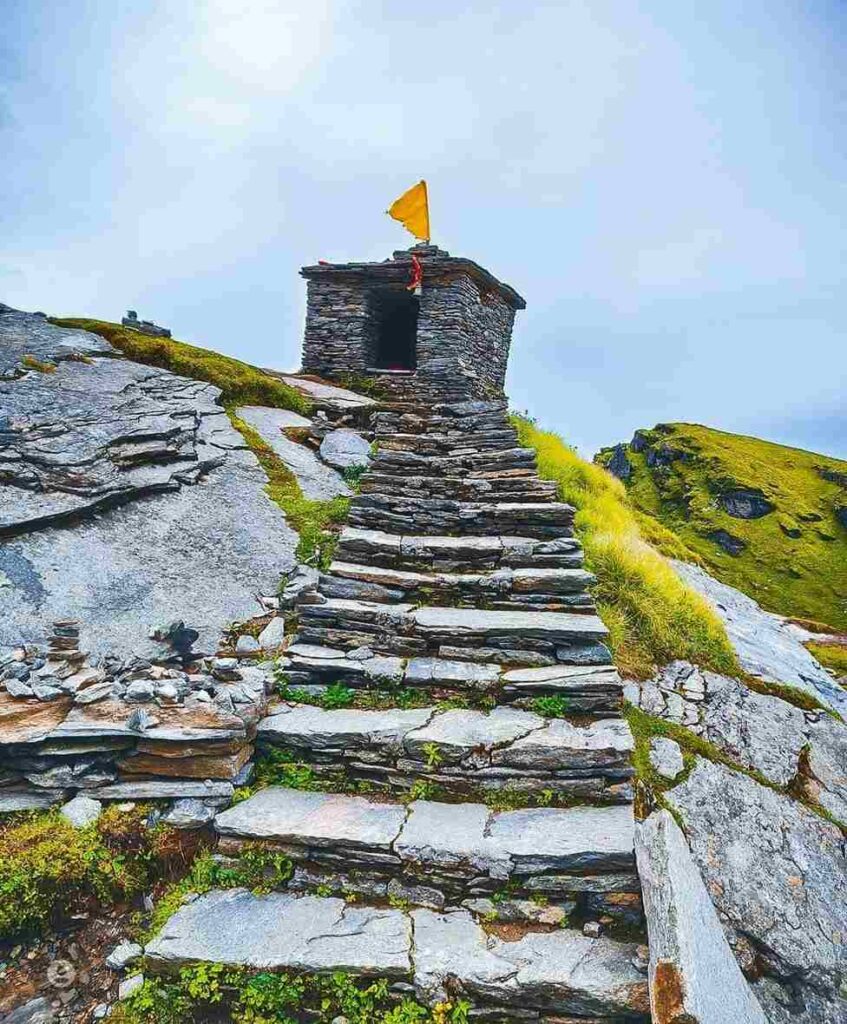
When planning a visit, it’s crucial to check current weather conditions and be prepared for sudden changes in weather, especially during the trekking season.




